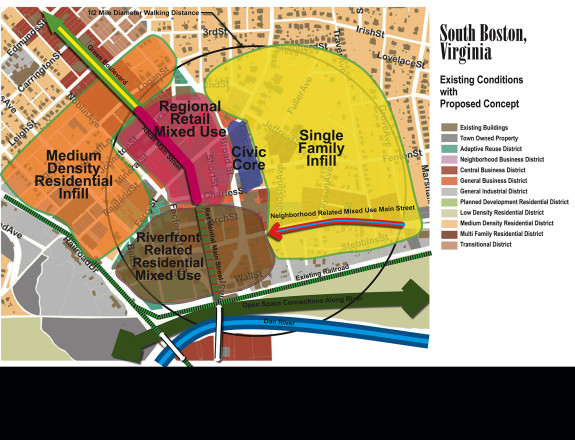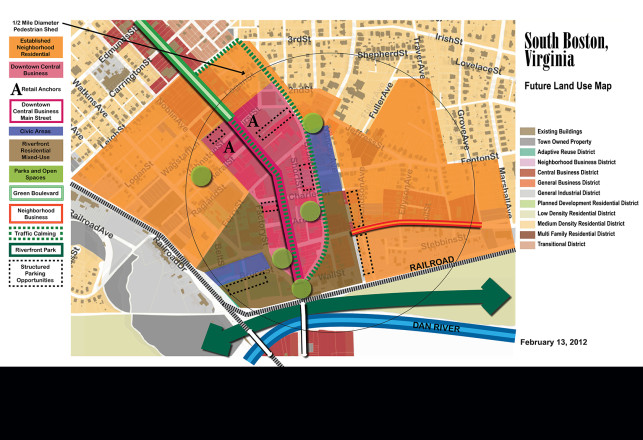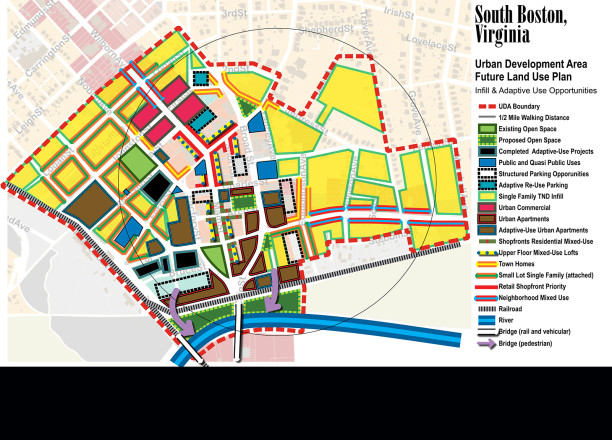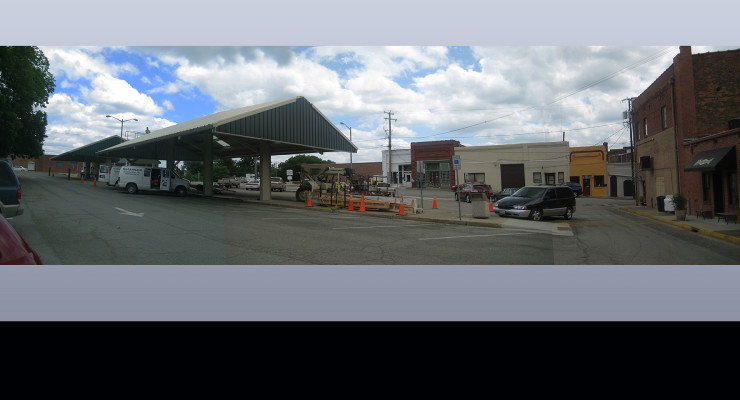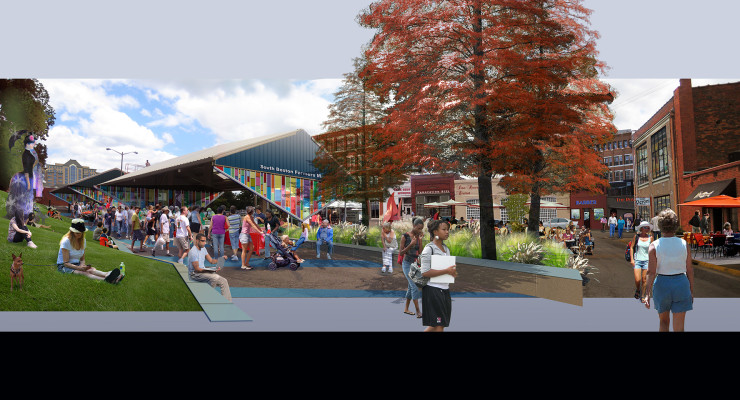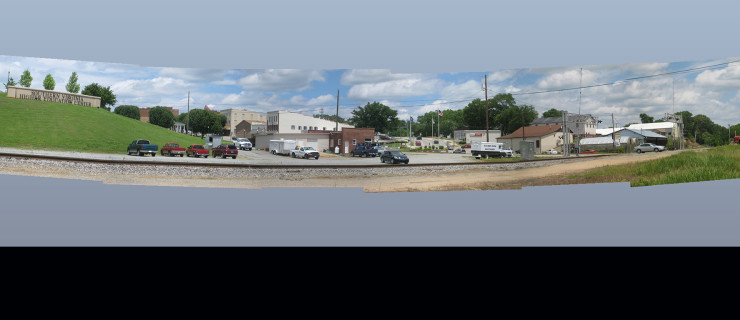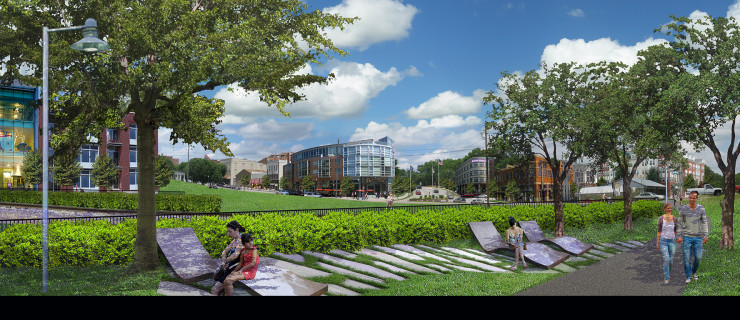South Boston, Virginia Mixed-Use Study
Urban Development Area
(use scroll bar on right side of this window to read description)
LOCATION: South Boston, Virginia
The South Boston UDA Plan was a part of the Virginia Department of Transportation’s Urban Development Program. This visionary program encouraged communities to put in place mixed-use zoning at higher densities as a way to heighten livability and reduce the street and roadway maintenance costs associated with urban sprawl. VDOT is responsible for maintaining most streets and roads in Virginia, except for those in a limited list of cities, and wants to establish a more sustainable future for road infrastructure and maintenance. Ed Hamm, while with Rhodeside & Harwell, produced the Urban Development Area Plan for this southern Virginia town.
Sitting on the Dan River, South Boston was an important port for shipping dark leaf tobacco in the 18th and 19th century. It later became a major market for bright leaf tobacco. The industry changed dramatically in the late 20th century and South Boston, like many small towns across the South, lost its tobacco market. The historic downtown and several large tobacco warehouses were constructed between 1850 and 1920 and remain relatively intact today. Sadly, the handsome storefronts are now mostly vacant and the warehouses stand empty. The late 19th century housing stock, on a grid of adjacent streets, is underutilized. Yet already, the town has rehabilitated a set of tobacco warehouses into a locally significant cultural and educational facility. The community wants to move ahead.
The approach for this urban design study was first to identify ways to adapt the vacant commercial and industrial buildings to primarily residential mixed-use. Next, was to focus future limited commercial activity and show where to best locate live-work and mixed-use into the existing connected framework of streets. Ed worked with the community to imagine how they could also celebrate living on the bluff just above the Dan River and transform the riverfront into an amenity to spur redevelopment. The inherent charm, history and walkability of this community, and its proximity to Durham and Chapel Hill, North Carolina give it the potential to become a retirement and tourist destination.
